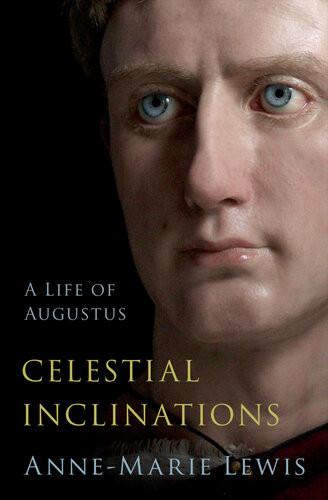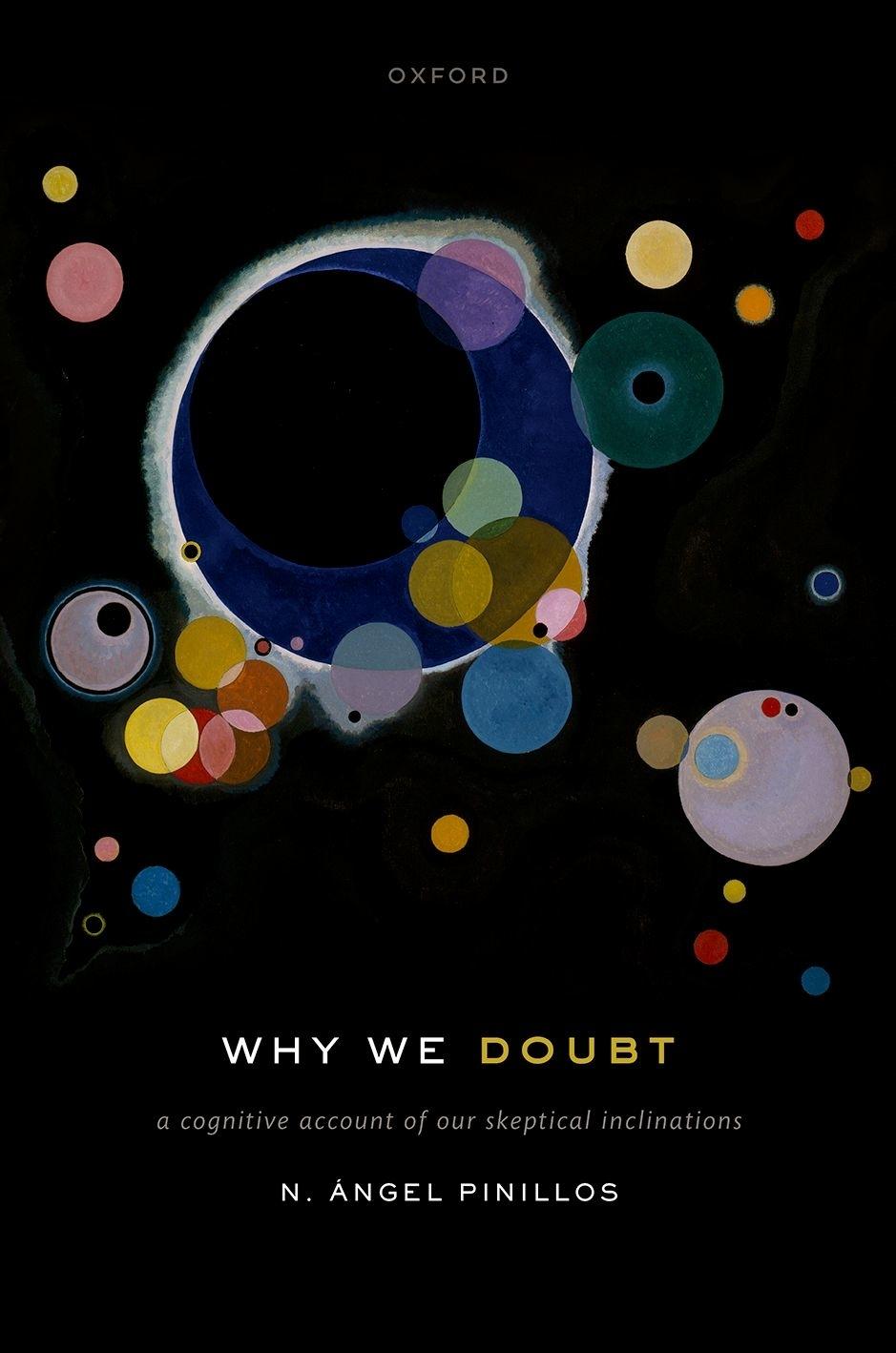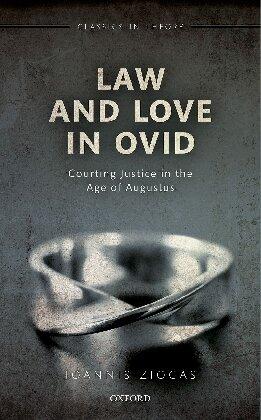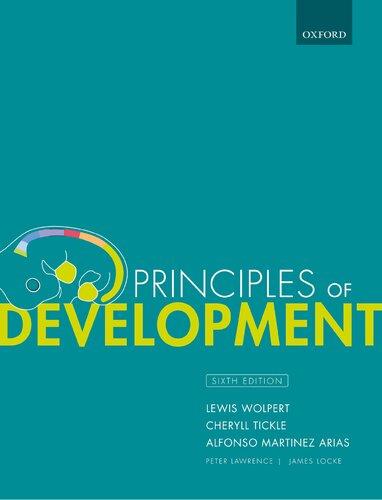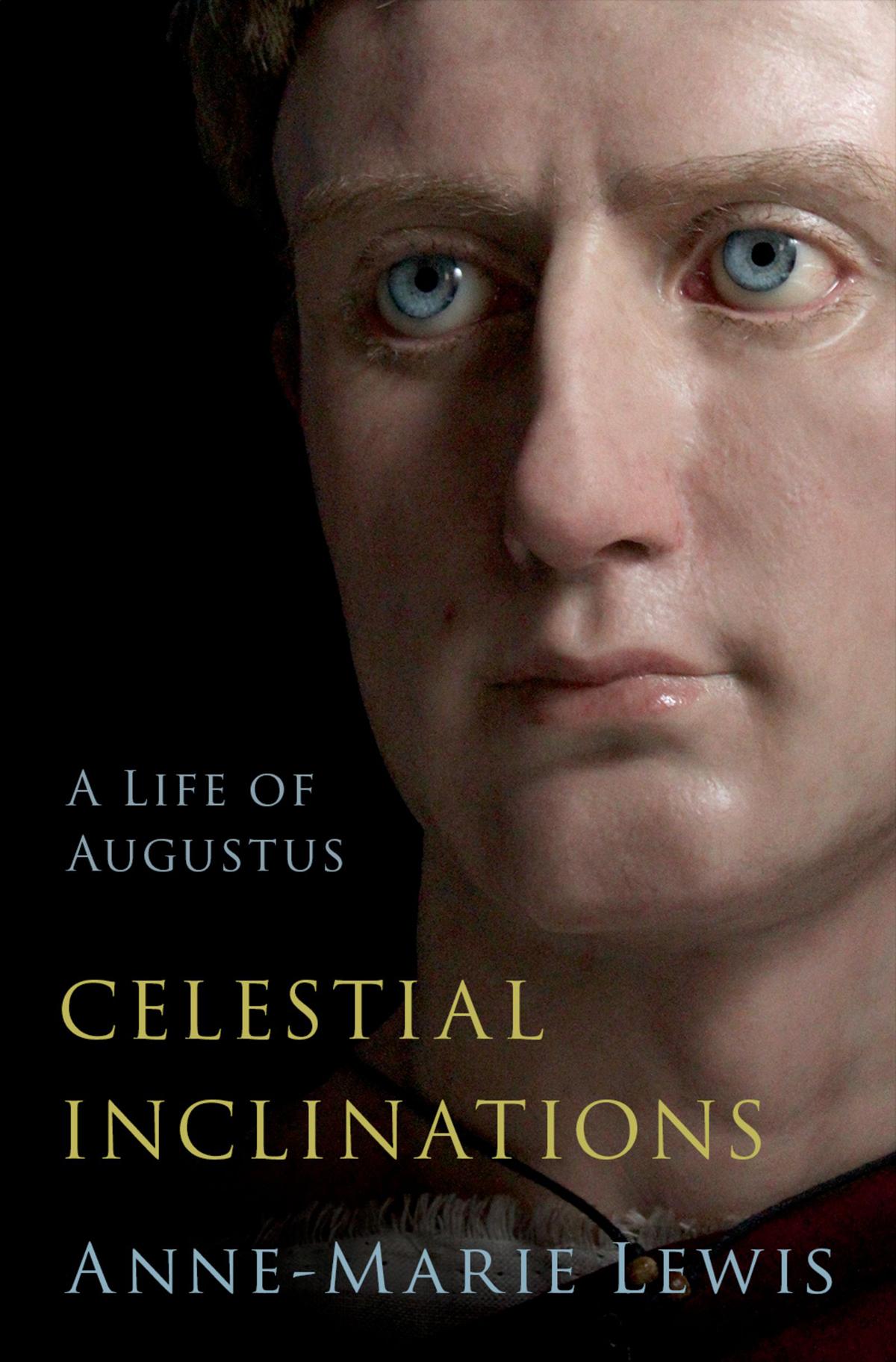ofAugustus
ANNE-MARIE LEWIS
Oxford University Press is a department of the University of Oxford. It furthers the University’s objective of excellence in research, scholarship, and education by publishing worldwide. Oxford is a registered trade mark of Oxford University Press in the UK and certain other countries.
Published in the United States of America by Oxford University Press 198 Madison Avenue, New York, NY 10016, United States of America.
© Oxford University Press 2023
All rights reserved. No part of this publication may be reproduced, stored in a retrieval system, or transmitted, in any form or by any means, without the prior permission in writing of Oxford University Press, or as expressly permitted by law, by license, or under terms agreed with the appropriate reproduction rights organization. Inquiries concerning reproduction outside the scope of the above should be sent to the Rights Department, Oxford University Press, at the address above.
You must not circulate this work in any other form and you must impose this same condition on any acquirer.
Library of Congress Cataloging-in-Publication Data
Names: Lewis, Anne-Marie, author.
Title: Celestial inclinations : a life of Augustus / Anne-Marie Lewis. Other titles: Life of Augustus
Description: New York, NY : Oxford University Press, [2023] | Includes bibliographical references and index. | Identifiers: LCCN 2022042401 (print) | LCCN 2022042402 (ebook) | ISBN 9780197599648 (hb) | ISBN 9780197599662 (epub) | ISBN 9780197599679
Subjects: LCSH: Augustus, Emperor of Rome, 63 B.C.-14 A.D. | Emperors—Rome—Biography. | Rome—Kings and rulers—Biography. | Rome—History Augustus, 30 B.C.-14 A.D. | Rome—Politics and government—30 B.C.-284 A.D. | Astronomy and state—Rome. | Astrology and politics—Rome.
Classification: LCC DG 279 . L 45 2023 (print) | LCC DG279 (ebook) | DDC 937/.07—dc23/eng/20221024
LC record available at https://lccn.loc.gov/2022042401
LC ebook record available at https://lccn.loc.gov/2022042402
DOI: 10.1093/oso/9780197599648.001.0001
sentio,inquit,tesedemetiamnunchominumacdomum contemplari;quaesitibiparva,utest,itavidetur,haeccaelestia semperspectato,illahumanacontemnito.tuenimquam celebritatemsermonishominumautquamexpetendamconsequi gloriampotes?...altespectaresivolesatquehancsedemet aeternamdomumcontueri,nequetesermonibusvulgidediderisnec inpraemiishumanisspemposuerisrerumtuarum.
“I notice,” said Scipio Africanus, “that you are now still gazing attentively upon the dwelling place and home of human beings. If it seems insignificant to you, as it is, spurn the human and always observe the celestial. What fame are you able to get from the common talk of human beings? What glory is worth desiring? . . . If you are willing to look up and to contemplate this dwelling place and the eternal celestial home, you will not pay attention to the talk of the common people. Nor will you place hope for your concerns in human rewards.”
Publius Cornelius Scipio Africanus speaking to Publius Cornelius Scipio Aemilianus, his grandson by adoption (Cicero, Rep. 6.19.20, 6.23.25)
Contents
ListofFigures
ListofTables
Acknowledgments
Methods and Materials
1. Nigidius Figulus and the Birth of a Future Dominusfor the World: 63 B.C.
2. Celestial Display and Cicero’s Consular Year: 63–60 B.C.
3. Celestial Venus, Caesar’s Victories, and the Julian Calendar: 59–45 B.C.
4. Cicero’s Arateaand the Education of Octavius in the Fixed Constellations: 46–45 B.C.
5. Theogenes of Apollonia and the Genituraeof Agrippa and Octavius: 45–44 B.C.
6. Octavianus and the SidusCrinitum: 44 B.C.
7. Conflict, Alliance, and the StellaComans: 44–42 B.C.
8. Antonius, Octavianus, and the Egyptian Mathematicus: 39 B.C.
9. Octavianus, Antonius, and the Banquet of the Twelve Gods: 38 B.C.
10. From Naulochus to Actium: 37–31 B.C.
11. Triumphs and Temples after the Battle of Actium: 30–28 B.C.
12. A New Name for Octavianus and the LudiSaeculares: 29–17 B.C.
13. Deaths in the Family and the Ara Pacis Augustae: 16–9 B.C.
14. Consolidation and Transition in the Final Years of Augustus’ Rule: 8 B.C.–A.D. 14
15. The Death, Funeral, and Deification of Augustus: A.D. 14
Notes
SelectBibliography
Index
ListofFigures
Cover
Fig. 1.1
Fig. 2.1
Fig. 2.2
Fig. 3.1
Fig. 3.2
Fig. 3.3
Fig. 4.1
Fig. 4.2
Fig. 4.3
Fig. 4.4
Fig. 4.5
Fig. 4.6
Fig. 4.7
Fig. 4.8
Fig. 5.1
Fig. 5.2
Fig. 6.1
Fig. 6.2
Fig. 6.3
BustofAugustusby Salva Ruano
The birth of the son of Gaius Octavius and Atia Balba, September 22, 63 B.C.
The first day of Cicero’s consulship, January 1, 63 B.C.
The conclusion of Cicero’s third oration against Catilina, December 3, 63 B.C.
The day of the Battle of Pharsalus, August 9, 48 B.C.
The morning of the Battle of Thapsus, April 6, 46 B.C.
The evening before the dedication of the Temple of Venus
Genetrix by Caesar, September 25, 46 B.C.
Group 1. The summer solstice, June 25, 46 B.C.
Group 2. The winter solstice, December 25, 46 B.C.
Group 3. The day after the winter solstice, December 26, 46 B.C.
Group 4. The night after the winter solstice, December 26, 46 B.C.
Group 5. Two days after the winter solstice, December 27, 46 B.C.
The Farnese Globe
Images of the constellations on the Farnese Globe
The rising of Cancer, July 16, 45 B.C.
P.Oxy. 235
The Genituraof Octavius as on an astrological board, modern display
The funeral of Caesar, March 20, 44 B.C.
The first day of the ludiin honor of Caesar, September 20, 44 B.C.
Fides and Aquila on the Farnese Globe
Fig. 6.4
Fig. 7.1
Fig. 7.2
Fig. 7.3
Fig. 7.4
Fig. 9.1
Fig. 9.2
Fig. 10.1
Fig. 10.2
Fig. 10.3
Fig. 10.4
Fig. 11.1
Fig. 11.2
Fig. 11.3
Fig. 11.4
Fig. 11.5
Fig. 12.1
Fig. 12.2
Fig. 12.3
Fig. 12.4
Fig. 12.5
Fig. 12.6
Aquila and the Milky Way at the ludiin honor of Caesar, September 20, 44 B.C.
Octavianus receives the praetorian imperium, January 7, 43 B.C.
Octavianus is elected consulsuffectus, August 19, 43 B.C.
The morning of Caesar’s deification, January 1, 42 B.C.
The Second Battle of Philippi, October 23, 42 B.C.
Near the beginning of the Banquet of the Twelve Gods, December 17, 38 B.C.
Near the end of the Banquet of the Twelve Gods, December 17, 38 B.C.
The Battle of Naulochus, September 3, 36 B.C.
The ovatiofor Octavianus, November 13, 36 B.C.
The day of the Battle of Actium, September 2, 31 B.C.
The evening after the Battle of Actium, September 2, 31
B.C.
The day of the fall of Alexandria, August 1, 30 B.C.
The closing of the doors of the Shrine of Janus, January 11, 29 B.C.
The triumphal celebration for Octavianus’ conquest of Egypt, August 15, 29 B.C.
The dedication of the Curia Iulia and the Temple of Divus Iulius, August 18, 29 B.C.
The dedication of the Temple of Apollo Palatinus, October 9, 28 B.C.
Octavianus takes the honorific cognomen Augustus, January 13, 27 B.C.
The dedication of the Temple of Jupiter Tonans, September 1, 22 B.C.
The arrival of Augustus back in Rome, October 12, 19 B.C.
The first nocturnal celebration of the LudiSaeculares, May 31, 17 B.C.
The first diurnal celebration of the LudiSaeculares, June 1, 17 B.C.
The third diurnal celebration of the LudiSaeculares, June 3, 17 B.C.
Fig. 13.1
Fig. 13.2
Fig. 13.3
Fig. 13.4
Fig. 13.5
Fig. 13.6
Fig. 13.7
Fig. 14.1
Fig. 14.2
Fig. 14.3
Fig. 14.4
Fig. 14.5
Fig. 14.6
The departure of Augustus from Rome to Gaul and the western frontier, July 30, 16 B.C.
The public anniversary of the birth of Augustus, September 23, 13 B.C.
Augustus assumes the position of Pontifex Maximus, March 6, 12 B.C.
The funeral of Agrippa, March 29, 12 B.C.
The dedication of the Theater of Marcellus, May 4, 11 B.C.
The dedication of the Ara Pacis Augustae, January 30, 9 B.C.
The Tellus Relief Panel, Ara Pacis Augustae
The Kalends of the newly named mensisAugustus, August 1, 8 B.C.
Augustus receives the title paterpatriae, February 5, 2 B.C.
The dedication of the Temple of Mars Ultor, May 12, 2 B.C.
The adoption of Tiberius and Agrippa Postumus, June 26, A.D. 4
The dedication of the Altar to Ops Augusta and Ceres Mater, August 10, A.D. 7
The celebration of the lustrumfollowing the announcement of the completion of the census, May 11, A.D. 14
Fig. 15.1
Fig. 15.2
Fig. 15.3
Fig. 15.4
Fig. 15.5
Fig. 15.6
The death of Augustus, August 19, A.D. 14
The arrival of the body of Augustus in Rome, September 3, A.D. 14
The funeral of Augustus, September 8, A.D. 14
The deification of Augustus, September 17, A.D. 14
The GemmaAugusteacameo, ca. A.D. 14
The LiviamitBüstedesDivusAugustuscameo, ca. A.D. 14
Table 6.1
Table 6.2
Table 6.3
Table 7.1
Table 7.2
ListofTables
Ancient Sources Supporting the Identification of the Sidus Crinitumas the Star Altair in Aquila
Ancient Sources Reporting the Hostile Tradition
Identifying the SidusCrinitumas a Comet
Ancient Sources Mistakenly Associated with the Sidus Crinitum
Ancient Sources for Caesar’s Constellation Chelae (Libra)
Ancient Sources for the StellaComans, Caesar’s Bright Star in Chelae (Libra)
MethodsandMaterials
CELESTIAL INCLINATIONS: A Life of Augustus tells the story of the successful career and reign of the first emperor of Rome from a perspective that has been overlooked in scholarly considerations of the man and the events that marked out his life. Augustus had great confidence in the destiny that he believed was written for him in the heavens, and from an early age he made effective use of the celestial sphere to confirm for himself and convey to others that important celestial entities supported his activities on the Earth and his inevitable greatness. The notion that Augustus had a connection with the celestial sphere was advanced privately by his parents even before the day of his birth. Atia Balba, the mother of Augustus, believed that she had been impregnated by a snake while she was attending a nocturnal ritual for Apollo, and she identified the permanent markings that appeared on her body afterwards as indications that her child was the son of Apollo, who was identified with the Sun (Augustum natum mense decimo et ob hoc Apollinis filium existimatum).1 Atia was a firm believer in omens, and she dreamed before the birth that her inner organs were carried up to the stars and unfolded across every land and the circuit of the zodiac (somniavit intestina sua ferri ad sidera explicarique per omnem terrarum et caeli ambitum). Gaius Octavius, Augustus’ father, also dreamed that the brightness of the Sun rose from Atia’s womb (utero Atiae iubar solis exortum). The connection of Augustus with the celestial sphere was made public on the day of his birth, when Publius Nigidius Figulus, a Roman mathematicus who was skilled in astrologia, which included both astrology and observational astronomy, announced at a meeting of his fellow Roman senators
that the celestial sphere proclaimed the future dominance of the newborn son of Gaius Octavius.2 Augustus would deepen his own knowledge of the heavens when he entered public life as a young man (adulescens) under the mentorship of his maternal great-uncle, Gaius Iulius Caesar (Caesar) (cos. 59 B.C.). Augustus may have begun his formal study of observational astronomy in 46 B.C., the important year in which Caesar celebrated his quadruple triumph and began to finalize his revision of the Roman calendar on astronomical grounds. Augustus also had his genitura (his natal horoscope) interpreted for him in Apollonia by the Greek mathematicus Theogenes not long before the assassination of Caesar on the Ides of March 44 B.C. The bond that Augustus had with the celestial sphere was no secret during his lifetime. In one of the many speeches he delivered in 43 B.C. that attacked Marcus Antonius (cos. 44 B.C.), Marcus Tullius Cicero (Cicero) (cos. 63 B.C.) called Augustus a young man with foresight derived from heavenly inspiration who was presented to the Roman people by some god (populo Romano obtulit hunc divinum adulescentem deus).3 The poet Publius Ovidius Naso (Ovid) had the Arcadian goddess Carmentis note in Augustus a celestial inclination (caelestismens) by means of which he would bear the public burdens inherited from his adoptive father Caesar (pondera caelestimentepaternaferet).4 The historian Gaius Velleius Paterculus said that Augustus had a celestial mind that spurned human counsel (sprevit itaque caelestis animus humana consilia).5 Velleius Paterculus also suggested that the soul of Augustus returned to the heavens (animam caelestem caelo reddidit) and more precisely to the zodiac (post redditum caelo patremetcorpuseiushumanishonoribus,numendivinishonoratum) upon his death.6 Near the end of Augustus’ life, the astrological poet Marcus Manilius commented that Augustus was himself a celestial entity who had come into existence for the mortal world and would then return to the zodiac (sidus nostro qui contigit orbi, / legum nunc terrispost caelo), which he would make complete once again (descenditcaelocaelumquereplebit) upon his return.7
Augustus used both astrology and observational astronomy to access and exploit the celestial sphere throughout his life. His genitura, which was unique to him among his aristocratic contemporaries, was a source of personal guidance for him throughout his life, but he did not share it outside his innermost circle.8 More important to him in his public, political activities were his astronomical observations of the sky where the celestial manifestations of his mythological Julian kin could be found. According to the genealogy promoted by Caesar, the gens Iulia had a divine origin. Caesar claimed direct descent from Iulus, the son of Trojan Aeneas, whose mother was the Olympian divinity Venus. Through his mother, Atia, and his maternal grandmother Iulia, a sister of Caesar, Augustus could claim a Julian ancestry. Because of their connection to Venus, Caesar and his Julian family were also linked to the other Olympian deities who were related to Venus and especially to Jupiter, the father of Venus. The Olympian deities who were kin to the Julians had celestial manifestations as the five visible ancient planets Saturn, Jupiter, Venus, Mars, and Mercury and as the two luminaries, Apollo the Sun and Diana the Moon. These divinities were the mythological ancestors who formed the celestial genealogy of Augustus.
The notable presence in the heavens of these Julian ancestral divinities along with other celestial entities associated with them is called celestial display in this biography of Augustus.9 Celestial display does not involve tracking the exact technical risings and settings, notably the heliacal rising of a star (the first visible appearance of a star at the eastern horizon before sunrise) or the cosmical setting of a star (the first visible setting of a star at the western horizon before sunrise).10 Celestial display is not archaeoastronomy, which involves the study of light-and-shadow phenomena and the orientation and alignment of buildings, monuments, cities, and towns according to regularly observed astronomical events visible from the Earth, such as the appearance of the Sun at the equinoxes and solstices.11 And celestial display is not astral mysticism, which deals with the worship of celestial
divinities.12 Celestial display in this biography is the manifestation of the Julian ancestral divinities in the form of the planets and the luminaries and of certain constellations and bright stars associated with these planets and luminaries at major events and activities, unplanned or planned, and the interpretation of these celestial entities in the sky as indications of support. Augustus was not the first Roman to notice how celestial display might be exploited in combination with important activities and events, but he certainly took the closest and most long-lasting interest of any Roman politician who lived before him or during his own lifetime in utilizing celestial display to his own political advantage. Cicero, influenced by his friend Nigidius Figulus, was the first Roman politician to attempt to use celestial display during the year of his consulship in 63 B.C. But Cicero overstepped his bounds by appropriating a Julian ancestor when he made the doubtful case in the presence of Jupiter in his celestial manifestation that Jupiter supported the controversial executions that Cicero authorized at the end of his consular year. Caesar also, it appears, began to take notice of celestial display in 48 B.C. Caesar had the right by birth to call upon Venus, one of his celestial Julian kin, but he did not have the time to use Venus in her full celestial potential before he was assassinated. Augustus, however, learned from Caesar the power of this strategy, and he would take note of and employ the Julian celestial entities at his important public events with greater success than both Caesar and Cicero before him.
The analysis of the interplay between the celestial and terrestrial spheres in the life of Augustus that is presented in this book covers the saeculum Augustum, which is defined here as the period beginning in January 63 B.C., the year of Augustus’ birth, and ending with his deification in September A.D. 14.13 The narrative framework is built on the important events in Augustus’ life that have demonstrable celestial significance. These events, all of which have firm dates, have been analyzed by way of fresh assessments and rereadings of relevant ancient sources, and they have been presented in chronological order within their historical and cultural
contexts. The sources include some written by Augustus himself. Fragments of the thirteen-volume memoir down to the time of the Cantabrian War (De Vita Sua) that Augustus composed around 24 B.C. during a time of relative stability in his life are extant.14 The autobiographical record of the many accomplishments that Augustus left, among other documents, to be opened after his death and displayed publicly outside his mausoleum in Rome and in the Roman provinces may be closely reflected in the Res Gestae Divi Augusti, which was written by Augustus in A.D. 14 during his seventy-sixth year, and can be read today.15 A few letters written by Augustus survive in the ancient sources, but the full corpus of the correspondence of and to Augustus, the daily journal he appears to have kept, and his complete memoir, which would have provided a fuller picture of the celestial influences in his life, are all lost. Memoirs and letters written by members of Augustus’ small family faction, which consisted of his maternal great-uncle Caesar, who died in 44 B.C.; a few male relatives of little power; and mostly women who had great influence privately but kept a relatively low profile publicly, are missing today but were consulted by later historians who wrote about the period of the saeculum Augustum.16 In addition to having a small family faction, Augustus had only a few close friends, most of whom were his coevals. He was fiercely loyal throughout his life to his closest friends, Marcus Vipsanius Agrippa (Agrippa) (cos. 37 B.C.) and Gaius Cilnius Maecenas (Maecenas).17 The memoirs, account books, and letters written by these two men constitute today a regrettable loss, as do the family genealogies that Cicero’s closest friend Titus Pomponius Atticus (Atticus) researched and wrote up at the request of prominent Romans families (the Iunii, the Marcelli, the Fabii, and the Aemilii), although these were available, like other ancient sources, to later writers in the ancient world.18
Other extant contemporary ancient sources written by those who were not family members or close friends of Augustus but who interacted with Augustus or his Julian family can be used to fill in the gaps left by the absence of sources written by the man at the center
of this study and those closest to him. The contemporary account of the conspiracy of Lucius Sergius Catilina (Catilina) by the historian Gaius Sallustius Crispus (Sallust), who was associated with Caesar, covers the dramatic events of 63 B.C., the year of Augustus’ birth. A favorable biography of Augustus based on Augustus’ own memoir and written in Greek by Nicolaus of Damascus, who was the friend and historian of Herod the Great of Judaea and who had also once been a tutor to the children of Antonius and Cleopatra VII of Egypt, provides contemporary evidence for episodes in the life of the younger Augustus down to about 25 B.C. The biography of Atticus by Cornelius Nepos, who was a friend of Atticus, offers a contemporary perspective on a man who was able to deal affably and generously with many of the most formidable political actors of his day: Cicero, Caesar, Antonius, Marcus Iunius Brutus (Brutus), and Antonius’ third wife Fulvia.19 Atticus was also linked to the family of Augustus, who was said to have been fond of Atticus and later betrothed his stepson Tiberius Claudius Nero, the future emperor Tiberius, to the infant granddaughter of Atticus, herself the daughter of Augustus’ close friend Agrippa. Contemporary historical sources written by authors who knew Augustus but are associated more with the reign of Augustus’ stepson and successor Tiberius are also useful. The partisan history of Velleius Paterculus, who served as a commander of a legion in the army of Tiberius in Germany after A.D. 4, provides an eyewitness view especially of Tiberius’ activities, with some attention to those of Augustus. Valerius Maximus presents some relevant stories about Augustus in his collection of popular and morally instructive sayings and doings.
The many works of Cicero, including his law-court speeches, public orations, philosophical treatises, poetry, and letters, are particularly valuable sources for the early decades of the saeculum Augustum, 63–43 B.C. Cicero’s philosophical works, such as his De Divinatione, De Natura Deorum, and De Republica, and his extant poetry provide evidence for the importance of the celestial sphere in contemporary thinking during the period of the saeculumAugustum. The letters Cicero sent to Atticus, who appears to have preserved
them in sixteen volumes after Cicero’s death in 43 B.C., are priceless for their insights into Cicero’s deepest fears, worries, and hopes about his family, his friends, his enemies, his career, Rome, and the young Augustus. The collection of Cicero’s letters to Atticus also contains some letters written to Cicero by others, as is not surprising, since the sharing of copies of letters was a common practice.20 The letters Cicero exchanged with contemporary political figures whom he considered friends (familiares) are more carefully worded and more formal than those he sent to Atticus. They were probably gathered later and edited by Cicero’s secretary Tiro. Cicero also wrote letters full of political advice and news of events to his only brother, Quintus Tullius Cicero (Quintus Cicero), letters short and personal to his first wife, Terentia, and letters dealing with the aftermath of Caesar’s assassination to Brutus, in whose career Cicero took a great interest. Although Cicero’s letters provide generally the perspective of only one member of Rome’s elite and cannot be taken on their own to provide a comprehensive history, they provide important perspectives on how Cicero and his contemporaries lived their private and public lives in accordance with the strength of the family factions into which they were born and with the assistance of the political, financial, and personal alliances they formed outside their factions. Cicero wrote poetic accounts about his political achievements. Portions of the poem he composed on his consulship (De Consulatu Suo) are extant, and one excerpt from this poem contains an astronomical account of his consular year. Cicero also wrote three books in verse about the year of his exile, De Temporibus Meis, now lost, in which he paid tribute to those who helped him in his efforts to return.21 Cicero, always keen to promote his accomplishments, even tried to get himself inserted into a history of Rome, now lost, that was being written by Lucius Lucceius (Lucceius) to cover the period from the Italian Social War in the years 91–87 B.C. down through his own day. Cicero had written to urge Lucceius to consider including an account of Cicero’s actions from the time of the conspiracy of Catilina in 63 B.C. through the year of his exile, 58–57 B.C. Lucceius would find in these years, Cicero
said, plenty of material and plenty of wickedness as well as a villain (Catilina) and a hero (Cicero) to make for exciting writing and reading.22
The works of poets writing during the saeculum Augustum are also valuable sources, although the poets themselves are only occasionally mentioned in the historical sources that deal with this period. Cicero agreed with his brother that the poems of Titus Lucretius Carus (Lucretius) displayed many lights of poetic talent (multis luminibus ingenii) as well as much craftsmanship (multae artis).23 Velleius Paterculus lists a number of the important poets active during the saeculum Augustum: Publius Terentius Varro Atacinus, Lucretius, Gaius Valerius Catullus (Catullus), Publius Vergilius Maro (Vergil), Albius Tibullus (Tibullus), and Ovid.24 The biographer Gaius Suetonius Tranquillus (Suetonius) mentions the neoteric poet Catullus because two of his poems offended Caesar.25 Suetonius also mentions the poet Gaius Cornelius Gallus (Gallus) but only because Gallus had betrayed the trust of Augustus.26 The major poets of the period were associated with two literary circles. The most important circle centered on Augustus’ close friend Maecenas and included Quintus Horatius Flaccus (Horace), Vergil, Sextus Propertius (Propertius), and Gallus. The second circle centered on Marcus Valerius Messalla Corvinus (Messalla) (cos. suff. 31 B.C.), Augustus’ opponent several times over, and included Tibullus, Lygdamus, Sulpicia, and Ovid. One of the tasks of the poets, as Horace noted, was to write words that were not only pleasing but also helpful to life (aut simul et iucunda et idonea dicere vitae).27 The poets in both circles were favorably disposed toward Augustus, and they subtly but effectively communicated what Augustus could not communicate himself without drawing down the ire of his political contemporaries—how the appearance of the planets, the luminaries, and certain stars and constellations in notable configurations signaled the support of the celestial sphere for Augustus.28 The use of the contemporary poetry of the period as historical evidence in no way diminishes the verses as works of art. Nor does such an approach reduce the content of the poems to the
level of mere reportage. In all cases, before any historical reading, due consideration has been given to the narrative of the poem in which the celestial allusion appears; in other words, to an examination first of how the poem means.29 Just as poetic sources, artistic sources also yield useful evidence about the importance to Augustus of the celestial sphere. Augustan or early Tiberian artistic representations in public art (architecture and sculptural reliefs) and private art (paintings), in which Augustus himself may have had some direct input, as well as contemporary and near-contemporary artistic representations supervised by others close to him (cameos and coinage) provide evidence that is consistent with information that can be gathered from the historical and literary sources. It is also possible to rely with confidence upon historical sources that postdate the saeculum Augustum because these later sources are known to have been based upon earlier sources, some now lost, that were written during the lifetime of Augustus. These earlier sources include the histories of Pompeius Trogus and Gaius Asinius Pollio (Pollio) (cos. 40 B.C.), the latter a former partisan of Caesar and of Antonius, and the history of the period down to 9 B.C. known as the AbUrbeCondita, written by Titus Livius (Livy), which is now extant only in the short summaries of books 117–42.30 The Flavian historian Publius Cornelius Tacitus (Tacitus) writing in the late first and early second century A.D. begins his less than complimentary assessment of the Julio-Claudian dynasty with a brief discussion of Augustus before launching into his venomous account of the reign of Tiberius, who was himself highly skilled at astrology. Important evidence about the life, character, and celestial interests of Augustus also appears at times in the compendium of scientific and cultural knowledge written by Gaius Plinius Secundus (Pliny the Elder) in the years before he lost his life in trying to save people in the area from the eruption of Mount Vesuvius in A.D. 79. Later historical sources include the epitomes of Roman history written in Latin by Publius Annius Florus (Florus) and the Roman histories written in Greek by Appian and Cassius Dio (Dio). The epitomes of Florus, which were written in the late first–early second century A.D., are based largely
on the history of Livy. Appian’s history, which was written during the second century A.D. and may have been based on the earlier history written by Augustus’ contemporary Pollio, is especially valuable down to the year 36 B.C. The history of Rome written by Dio in the late second–early third century A.D. is complete for Augustus down to 10 B.C. and in summaries after this year. Dio’s account, the main historical narrative after 36 B.C., provides a chronological structure but few actual dates, as its author admits, but in comparison with other extant historical sources, Dio’s history regularly provides information on omens and celestial matters.31 In addition, the biographies written in Greek by Lucius Mestrius Plutarchus (Plutarch) in the early second century A.D., comparing notable Romans with notable Greeks, also provide valuable evidence for the public and private lives of Augustus and his use of the celestial sphere. Plutarch wrote no biography of Augustus, for whom no comparable Greek figure exists, but he wrote biographies of several of the principal political figures of the saeculum Augustum whose lives in various ways intersected with the life of Augustus: Caesar, Gnaeus Pompeius Magnus (Pompeius Magnus) (cos. 70 B.C.), Cicero, Marcus Licinius Crassus (Crassus) (cos. 70 B.C.), Marcus Porcius Cato the Younger (Cato), Brutus, and Antonius. Further evidence about the character of Augustus and the events and people in his life is provided in biographies of the political figures Caesar, Augustus, Tiberius, Tiberius Claudius Nero Germanicus (the emperor Claudius), and Nero Claudius Caesar (the emperor Nero), and of the poets Horace and Vergil, which were written also during the early second century
A.D. by Suetonius, whose position as the secretary to the emperor Hadrian gave him access to the imperial archives and quite likely to the full memoir of Augustus itself. Suetonius’ biographies are particularly valuable for their personal, political, and social perspectives and the anecdotes of celestial relevance they provide about his subjects. Important information regarding the Roman understanding of time, the Roman calendar, and birthdays can be found in the prose work Noctes Atticae, written by Aulus Gellius in the second century A.D., and in the prose work DeDieNatali,written
by the third-century A.D. grammarian Censorinus on the basis of earlier sources. Information found nowhere else in the ancient sources regarding the festival of the Saturnalia in December and the reform of the Roman calendar by Caesar and the subsequent adjustments to the Julian calendar made by Augustus can be found in the Saturnalia, a prose work written in the fifth century A.D. by the antiquarian Macrobius Ambrosius Theodosius (Macrobius) but evidently based on earlier sources.
Because of the focus on astrology and astronomy in this life of Augustus, astronomical and astrological works also serve as an important and distinct category of ancient source materials. The astronomical and astrological sources that predate the lifetime of Augustus or date securely to the period of the saeculum Augustum have been emphasized here. These include the poem on the universe written in Latin by Lucretius; the practical handbooks that discuss the seasons and the names and regular appearances of celestial objects by Marcus Porcius Cato the Elder (cos. 195 B.C.) and the polymath Marcus Terentius Varro (Varro), a contemporary of Caesar and Augustus; astronomical accounts written in Greek by Aratus of Soli in Cilicia, especially, and by Geminos, and in Latin by Cicero, Nigidius Figulus, Gaius Iulius Hyginus (Hyginus), Manilius, Nero Claudius Drusus Germanicus (Germanicus), Vergil, and Ovid; and prose works by Marcus Vitruvius Pollio (Vitruvius) in Latin and by Strabo and Diodorus Siculus in Greek that discuss astronomy and astrology in some detail. The celestial information found in later works by writers including the natural philosopher Pliny the Elder, the biographers Plutarch and Suetonius, and the historians Appian and Dio is also employed when it clarifies the impact of celestial display on the important historical events of the saeculumAugustum considered here. Little use of the Greek and Roman handbooks of astrology that postdate the lifetime of Augustus, however, has been made in this life of Augustus. These handbooks, most notably those written in the first century A.D. by Dorotheus Sidonius, in the second century A.D. by Claudius Ptolemaeus (Ptolemy) and by Vettius Valens, and in the fourth century A.D. by Iulius Firmicus Maternus show evidence at times that they are using accumulated past astrological
teachings, but they are very detailed and specific and they clearly have accumulated so much post-Augustan material that they may not completely reflect the earlier doctrine and practice of astrology during the lifetime of Augustus. Fortunately, use of these later sources to interpret a genitura from the period of the saeculum Augustum is not necessary. Sufficient astrological guidance can be gathered from sources of the period such as astrological papyrus fragments containing natal horoscopes, contemporary poetry, and the poetic compendium of astrology written by Manilius, all of which can be used to interpret the geniturae of Augustus, Agrippa, and Antonius, which are of critical importance to this study, in ways that are faithful to the astrological understanding and practices of the saeculumAugustum.
The ancient written sources and the monumental fasti, most of which were carved in stone and set up in various places around Italy during the lifetimes of Augustus and his successor Tiberius, provide the dates for the major events that mark the life of Augustus.
32 These dates are presented in the ancient Greek and Roman sources in variable ways, as the birthday of Cicero demonstrates. Cicero was born in the region of Arpinum, a town in Italy located about sixty miles southeast of Rome, a place he described in a letter to Atticus with a quotation from Homer’s Odysseyas rough but a good nursing mother (τρηχεῖ’, ἀλλ’
33 Cicero noted the date of his birth as the third day before the Nones (III Non., natali meo).34 Plutarch in his biography of Cicero recorded Cicero’s birthday according to the Greek system: Cicero was born on the third day of the new Kalends: that is, on the third day of the first month of the year (ἡμέρᾳ
35 Aulus Gellius dated Cicero’s birth according to the Roman day and the Roman system of eponymous years: Cicero was born in the year when Quintus Caepio and Quintus Serranus were consuls on the third day before the Nones of January (dinumeratisquippe annis a Q. Caepione et Q. Serrano, quibus consulibus ante diem tertium Nonas Ianuar. M. Cicero natus est).36 Plutarch writing in the first century A.D. century noted that Cicero died at the age of sixty-four
from which one may count back from the year of his death to the year of his birth.37 The most commonly employed ways of expressing a date in the Roman calendar are evident in these references to Cicero’s birthday.38 The years are most commonly distinguished from one another as eponymous years according to the two elected consuls who took office on the first day of each year. The twelve months are usually noted in an abbreviated form, as they are in Cicero’s letters: Ian., Febr., Mart., Apr., Mai., Iun., Quint., Sext., Sept., Oct., Nov., and Dec. Dates are also noted with reference to the three important points of each month, also abbreviated: the Kalends (Kal.), the first day of each month; the Nones (Non.), the fifth day in the shorter months and in the months of January, Sextilis, and December, which later came to have thirty-one days, or the seventh day in the longer months; and the Ides (Id.), the thirteenth day in the shorter months and in the months of January, Sextilis, and December or the fifteenth day in the longer months.39 Days in a month other than these three fixed days are counted backward by inclusive reckoning from these fixed days as, for example, the third day before the Nones of January.40 Dates have been expressed in the following chapters in two ways: first, in the ancient format and, second, according to the modern system by the modern month written in full, the numerical day of the month, and the Julian year with the use of the designations B.C., which is the equivalent of B.C.E., Before the Common Era, and A.D., which is the equivalent of C.E., the Common Era, of the Anno Domini system.41 The date for Cicero’s birthday, for example, would be expressed first as the third day before the Nones of January in the consulship of Quintus Caepio and Quintus Serranus and then in modern form as January 3, 106 B.C. The dates provided for events that are of critical importance for Augustus must also be considered in light of any issues that may have beset the Roman calendar during the period of the saeculum Augustum. According to legend, the quasi-lunar Roman calendar was created by Romulus and Numa, the first and second kings of Rome, and it sometimes needed periodic adjustments, known as
intercalations, in the form of days added in the month of February that would bring the calendar back into harmony with the astronomical year. The task of inserting intercalary days in the Roman calendar during the period of the Roman Republic was given to priests who were politicians, not astronomers. Sometimes the priests missed out the intercalations because of ineptitude or simple ignorance of what had to be done to keep the calendar in line. Sometimes the priests missed out the intercalations because of political manipulation or financial chicanery.42 Caesar reformed the calendar by the addition of extra intercalary days, and on the Kalends of January (January 1) in 45 B.C., he put his new Julian calendar in place by decree.43 Caesar’s calendar had 365 days and required the addition of one leap day added every four years to maintain its alignment with the astronomical calendar. Ideally, because of Caesar’s reform of the calendar on astronomical grounds, no further issues with the Julian calendar should have occurred afterwards. But the Julian calendar had begun to drift as early as 42 B.C. because the leap days planned by Caesar to occur every fourth year were applied incorrectly every third year instead.44 The discrepancy that developed was not as severe as the one Caesar had to correct in 46 B.C., and it was little regarded, practically speaking, by the general population at the time.45 The drift in the calendar, however, needed to be fixed eventually, and following some adjustments by Augustus after 12 B.C., the Julian calendar began to operate from A.D. 8 on as Caesar had intended. Before 45 B.C., the years in which calendrical intercalations took place, when they did take place, often cannot be known today with definite certainty. For this reason, modern historians usually consider dates in the pre-Julian Roman calendar as the ideal Julian dates without regard for any possible intercalation in the year.46 This method of retrojection for dates is not automatically assumed here. Instead, for the events before Caesar’s reform of the calendar, the dates provided in the sources are assessed for accuracy individually in conjunction with other ancient sources. For example, no issues with the Roman calendar seem to have occurred in 106 B.C., the year
of Cicero’s birth, because Cicero would have been sure to note any chronological issues that had an impact upon him. Dates for events occurring between 45 B.C. and A.D. 8, when the Julian calendar was slightly adrift, have also been assessed in conjunction with information found in the ancient sources. The ancient evidence indicates, however, that both Caesar and Augustus may have been using the astronomical calendar rather than the Roman civic calendar or the slightly drifting Julian calendar more often than has been previously recognized. The astronomical calendar, which was based on the observed movement of the Sun through the constellations of the zodiac around the Earth, was the only calendar in Roman culture that was reliable for farmers and sailors; for generals and soldiers who needed to tell time outside Rome, on campaign, and while traveling; or for anyone who wished to keep a permanent and accurate record of time. Cicero was probably referring to the astronomical calendar in a letter he sent to his younger brother, Quintus Cicero, in March 56 B.C. when he remarked that he knew the sea was still closed to navigation (adhuc clausum mare scio fuisse), thus preventing anyone from bringing an eagerly awaited letter from him.47 The astronomical calendar was also most likely the calendar used by Cicero and Atticus in their personal correspondence, where precise and accurate dating was necessary. Cicero and Atticus wrote faithfully to each other over many years, often several times a day. Both men also moved around frequently. Cicero rotated between his house in Rome and his several villas in Italy and sometimes went abroad. Atticus spent time in Rome at his house on the Quirinal Hill and traveled abroad to places like Athens and Epirus in northwest Greece, where he had property. Sometimes letters were delayed and arrived at their destination together in bundles. Sometimes letters arrived damaged, waterlogged, and unreadable. Sometimes letters were lost in transit. With such frequent exchanges of letters and all the difficulties of keeping track of the order of correspondence, accurate dating was essential. Cicero organized letters methodically and answered them in their chronological order, often noting the dates on which they had been
written by his correspondents and the dates on which they had been received by him.48 Cicero also kept the letters he received from Atticus in chronological order and at times reread them for inspiration and for comfort. For these reasons, Cicero would probably not have used the Roman calendar, which was subject to the possibility of random intercalations not planned on any strict schedule far in advance. Cicero would have used the most reliable, accurate method of dating the letters he wrote, which was the astronomical calendar. Augustus also planned the grand celebration known as the LudiSaeculares in 17 B.C. that was to mark the end of one period of time, a saeculum, and the beginning of another, with reference to the astronomical calendar. He must also have used the astronomical calendar in 10–9 B.C., when he placed the imported Egyptian obelisk within the large solar complex devised by Novius Facundus in the Campus Martius. When Augustus was periodically away from Rome on military campaigns and administrative business during the years 42 B.C. through A.D. 4, he also had to employ the astronomical calendar. In this regard, he was following Caesar, who appears to have followed the astronomical calendar in the year before his reformed Julian calendar was formally put into operation on the Kalends of January 45 B.C. In following the astronomical calendar, Augustus was able to set the date for a new event in order to take advantage of an agreement between the celestial backdrop of fixed constellations on the original date and on any future anniversaries.
In order to date a letter by the astronomical calendar, keep track of a birthday, record a personal event, plan for an event in the future, or honor the anniversary of an event in the past, Romans like Cicero, Caesar, and Augustus availed themselves of relatively small, portable, multipurpose personal calendars, which would have resembled the calendars on which people today record a variety of events: public and private anniversaries, birthdays, obligations, religious days, civic dates, work days, school days, holidays, weekends, seasonal points, lunar phases, or even specialized dates that provide the locations of planets, the Sun, and the Moon in their
astrological signs, and the dates when the planet Mercury is retrograde. Ancient personal calendars were not carved in stone as were the monumental fasti but created by using a fragile medium like papyrus or wood, with the result that they have been lost over time. Evidence in the ancient sources, however, indicates their existence and practical usefulness for tracking and choosing dates. Cicero asked Atticus to use his own personal calendar to mark the beginning of Cicero’s proconsulship in 51–50 B.C. and to track out the year to its conclusion. Cicero also used his own personal calendar to mark the beginning of his proconsular year, to record the only military encounter he had during this year with a local tribe in order to record his exploits and write about them later, and to mark the conclusion of his proconsular year.49 The progress of time in a year on such personal calendars could be accomplished easily and accurately by moving a peg or a marker on the calendar from day to day. Gaius Petronius Arbiter (Petronius) in his Satyricon, which was written during the reign of Nero, the great-great-grandson of Augustus, recounts a description remembered by Encolpius, the main character in the novel, of how personal calendars were used. These personal calendars (parapegmata), which were in the house of the ostentatious freedman Gaius Pompeius Trimalchio Maecenatianus, the host of the banquet Encolpius was attending, allowed Trimalchio’s household staff to note their master’s personal obligations, the character of the days, and the course of the Sun, the Moon, and the planets.50 Trimalchio’s personal calendars took the form of two tablets (duaetabulae) affixed to the posts on either side of the entry to the dining room in his house. One calendar listed two future dinner engagements of Trimalchio on the third day before the Kalends of January and the day before the Kalends of January (December 30 and December 31). The other calendar presented a list of favorable (boni) and unfavorable (incommodi) days marked with a distinguishing stud, as well as the course of the Moon and images of the five ancient planets and the two luminaries.51 Augustus and other Romans were attentive not only to marking and tracking dates but also to noting the hours of the day, which are
